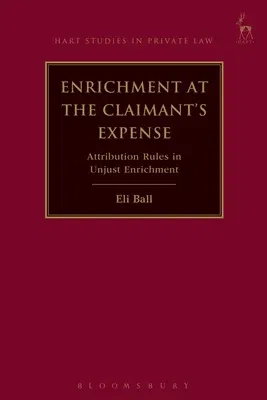This book presents an account of attribution in unjust enrichment.
Attribution refers to how and when two parties - a claimant and a
defendant - are relevantly connected to each other for unjust enrichment
purposes. It is reflected in the familiar expression that a defendant be
'enriched at the claimant's expense'. This book presents a structured
account of attribution, consisting of two requirements: first, the
identification of an enrichment to the defendant and a loss to the
claimant; and, secondly, the identification of a connection between that
enrichment and that loss. These two requirements must be kept separate
from other considerations often subsumed within the expression
'enrichment at the claimant's expense' which in truth have nothing to do
with attribution, and which instead qualify unjust enrichment liability
for reasons that should be analysed in their own terms. The structure of
attribution so presented fits a normative account of unjust enrichment
based upon each party's exchange capacities. A defendant is enriched
when he receives something that he has not paid for under prevailing
market conditions, while a claimant suffers a loss when he loses the
opportunity to charge for something under the same conditions. A
counterfactual test - asking whether enrichment and loss arise 'but for'
each other - provides the best generalisation for testing whether
enrichment and loss are connected, thereby satisfying the requirements
of attribution in unjust enrichment.

